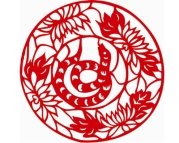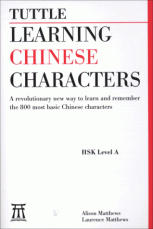A couple of weeks ago, a website called CollegeStats.org published a ranking of the Top 5 Languages to Learn in College. They wrote and asked me to post a link here to their list. Since I’m here in the leafy environs of Tuscaloosa now, this is an ideal time to blog about it. Alas, after reading the list CollegeStats.org put together, I wrote back and told them I didn’t agree with their reasoning. In the spirit of civil discourse on the ‘Net, I invited them to collaborate with me on a revised list. They said no, but said they didn’t care if I mentioned their list with my own point of view, so I’m guessing this is a case of “all publicity is good publicity”.
This then is the list of CollegeStats.org’s Top 5 Languages to Learn in College:
- French
- Mandarin Chinese
- Korean
- Arabic
- Spanish
First, bravo for CollegeStats.org for taking up the subject. Second, these five languages all have rich cultural and literary traditions and interesting applications. If I suggest some swaps, I mean no slight to one language or another. I’ll say up front, however, that naming the list as “the best languages to learn in college” necessarily frames the choice in terms of future employment or utility. I deeply “get” that college should provide more in the way of cognitive development, decision-making skills, citizenship, and the like than just job skills, but the cost of college is nose-bleed high right now so I think it’s rational to link college expenses, at least in part, with future job prospects.
I’m a Francophile American. I was in Paris just 3-4 days after 9/11, and the outpouring of solidarity and support from complete strangers—warm hugs, free drinks, houses draped with massive American flags—was unforgettable. The French were there for us, and I’ll never say “freedom fries”.
Speaking or reading French still confers a lot of cosmopolitan polish. Practically speaking, so much of English comes from French that learning French improves your English. The same can be said of Latin. It would make me happy if Louisiana would go beyond a superficial embrace of its French heritage and learn a little French. Even un peu.
In terms of utility, however, outside of metropolitan France and Quebec, French is of limited use. There’s a long list of Francophone countries, especially in West Africa, and if any of those places are where you intend to live or do business, French is an excellent choice. Otherwise, I’d keep French on the list, but not higher than #5.
There’s a boom in Korean culture and business now, Hallyu, which I blogged about last year. I’m a fan. Korean’s an intricate and complex language combined with a writing system that’s both elegant and practical. 1.7 million Americans identify as Korean-American. The Korean economy is humming along and has risen in size to #15 in the world. I’d love to see Korean keep growing. So I only write this with affection, but I don’t see Korean in the top 5 yet. If you have any plans to live or work in Korea or a Korean-speaking environment abroad, however, learn Korean now.
Arabic’s getting a lot of attention too. There’s so much ignorance about Arabic-speaking nations and cultures in the West, this can only be a good thing. And yet also, looking at utility as measured by the size of national economies, the World Bank listed four Arabic-speaking countries in the top 50 nations in terms of GDP in 2011: Algeria, Egypt, Saudi Arabia, and the United Arab Emirates. Their combined GDP about equals that of Australia. I am 100% behind Arabic instruction. Arabic language and literature have deep riches to explore, and there are countless reasons to learn and enjoy Arabic. I just don’t see it in the Top 5 yet unless you have a specific personal or professional (business or diplomatic) interest.
Rounding out CollegeStat’s list were Mandarin and Spanish, and I agree that they belong there. Here’s my list:
- Mandarin Chinese
- Something relevant to YOU
- Spanish
- Japanese
- Pick one: Latin or French
With my #2, I try to inject something into the list that CollegeStats ignores, and that’s you. I don’t believe language learning is a one-size-fits-all thing. The cognitive benefits of learning any foreign language are the same, and I say people should choose the language they’ll go the furthest in. Yeah, I said that utility is important. Well, fluency can lead to job opportunities, but if you force yourself to study something you don’t connect with emotionally, you’ll never get to fluency. If you’re an Italian-American and have Italian-speaking relatives, learn Italian. If you eat dinner in an Ethiopian restaurant in your neighborhood every couple of weeks, and that’s your only exposure to a foreign language, dabble in some Amharic. If you’re a Chinese-American, but you feel passionately about Cantonese instead of Mandarin, learn that.
I’m putting Japanese on the list, and OK I speak Japanese, but Japan is still the world’s third largest economy. Japan has had a tough couple of decades, but you can’t ever count the Japanese out.
For my last, I’m suggesting that people pick between Latin and French. Both of these languages contributed so much to English that learning either will add clarity, nuance, and color to your native language. Some professions draw on one more than another. Going to cooking school? French. Law school? Latin.





